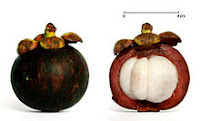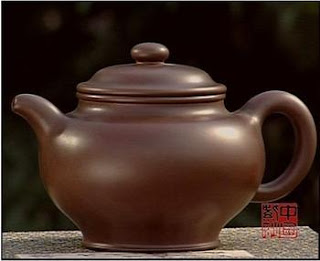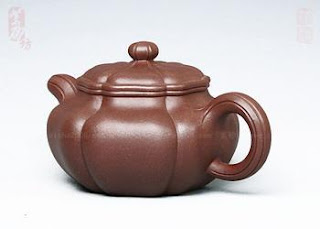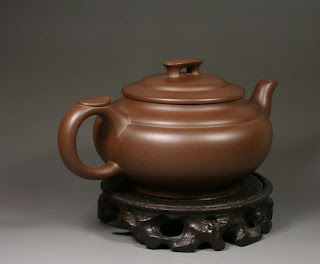The
purple mangosteen is a tropical evergreen tree believed to have originated in the Sunda Islands and Indonesia. It grows mainly in Southeast Asia, and it also grows in tropical South American countries such as Colombia and in India, where the tree has been introduced. The tree grows from 6 to 25 m (20–82 ft) tall.
The fruit of the mangosteen is sweet and tangy, juicy, and somewhat fibrous, with an inedible, deep reddish-purple coloured rind (exocarp) when ripe. In each fruit, the fragrant edible flesh that surrounds each seed is botanically endocarp, i.e., the inner layer of the ovary.
The juvenile mangosteen fruit, first appears as pale green or almost white in the shade of the canopy. As the fruit enlarges over the next two to three months, the exocarp colour deepens to darker green. During this period, the fruit increases in size until its exocarp is 6–8 centimetres (2.4–3.1 in) in outside diameter, remaining hard until a final, abrupt ripening stage.
The subsurface chemistry of the mangosteen exocarp comprises an array of polyphenols, including xanthones and tannins that assure astringency which discourages infestation by insects, fungi, plant viruses, bacteria and animal predation while the fruit is immature. Colour changes and softening of the exocarp are natural processes of ripening that indicates the fruit can be eaten and the seeds have finished developing.
The edible endocarp of the mangosteen is botanically defined as an aril with the same shape and size as a tangerine 4–6 centimetres in diameter, but is white. The circle of wedge-shaped arils contains 4–8, rarely 9
segments, the larger ones harbouring apomictic seeds that are unpalatable unless roasted.
Often described as a subtle delicacy, the arils bear an exceptionally mild aroma, quantitatively having about 1/400th of the chemical constituents of fragrant fruits, explaining its relative mildness.
 |
The Queen of fruits, mangosten
|
 |
| The inside of mangosteen |
The fruit mangosteen is seldom appeared in Yixing teapot design. The reason could be that this fruit is not popular in China and many potters have no idea how the teapot will look like when crafted into the shape of a mangosteen. As you know, most potters would rather like to copy existing teapot design or modify somebody's design.
 |
| The King of fruits, Durian |
However, there is a potter by the name of Zhou Juefang (周菊芳), a student of Prof Pan, created her very own mangosteen teapot. The teapot looks very cute and unique. Instead of the traditional knob on the lid, a stalk with some petals sit on top of the lid. This design of the lid will immediately remind people that the fruit is a mangosteen. For people who live in this part of the world where mangosteens are aplenty, it is a nostalgic experience to have a mangosteen teapot to brew tea. Interestingly, people here also like another tropical fruit called
durian locally.
Durian fruits which have a pungent smell (to some people) are considered the King of fruits here. Then mangosteen fruits which have a subtle taste and mild fragrance are considered the queen of fruits. Durians are by nature fruits that can
cause heatiness but mangosteens on the other hand have cooling effects. So these two fruits can really compliment each other.

Mangosteen teapots by Zhou Juefang
周菊芳
性别:女
证书编号:320223670816158
类别:工艺美术师 |
 |















